Yes, gentle reader, you have read the article title correctly. But bear in mind that this is not another of my several articles on human sexuality, and how you can bang like a champ. I think I have been quite instructive in that regard.
No, when I say that the thrust is a must, I use it in a purely non-sexual context. I use it to refer one of the fundamental links in the chain of your physical well being, a chain of muscles that is used in essentially all sports and most actions in your daily life. Those are the muscles of your core and hips.
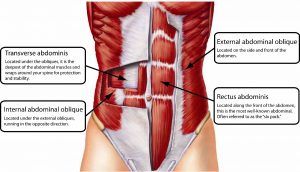
An Anatomy Lesson
A lot of physical trainers, athletes, and sports broadcasting talking heads will talk about “the core” in only the vaguest of terms, leaving the uninitiated to the conclusion that it is some mythical muscle in the center of the body. That same uninitiated person will likely be confused about how to train this illusory muscle in his torso.
The core (or rather, the torso) contains an enormous amount of muscles, but the ones that are colloquially thought of as “the core” consist of:
The Rectus Abdominus, what the common man thinks of as the “abdominal” muscle

The external and internal obliques
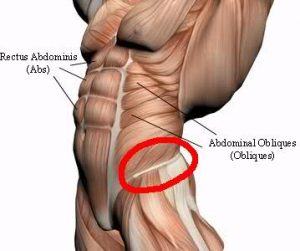
The transverse abdominus
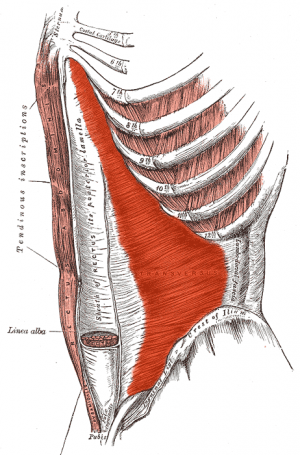
The various small muscles of the spine (collectively called the erector spinae)
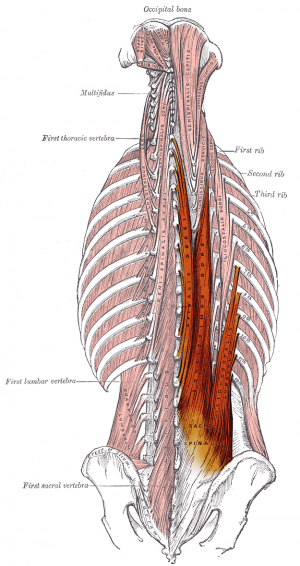
And the muscles of the hips (gluteus maximus and minimus, the femoral abductors and adductors, and etc.)
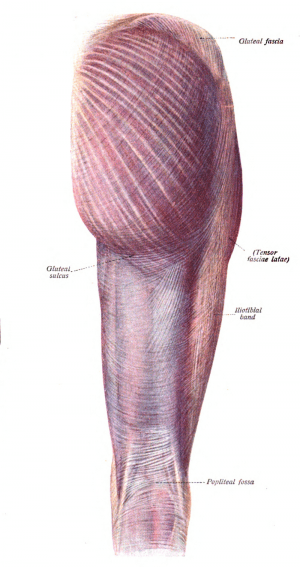
Why Train Them?
For the very simple reason that if you wish to do ANYTHING physical, you’re going to need to train the core, and train it good and hard.
Of course, there’s the aesthetic benefits of having a defined abdomen, obliques, and the lean “V-Tapered” hips that the women love. But as it is a common tenet of the ‘sphere that only a whore trains purely to look good to the opposite sex , we will eschew that—although training the core in the way you will learn here will indeed make you look good.
Instead, analyzing the benefits of core training will reveal many ways that a strong torso will bring “Great honor upon your house”.
Martial artists have long been aware of the benefits of core training—why do you think so many styles demand that their students perform kiais as they strike? The sudden clenching and tensing of the abdomen adds power to the blows. Beyond that, proper punching and kicking form requires a muscular snapping of the waist, shoulders and/or hips. And for grappling based martial arts such as judo, jiu-jitsu both traditional and Brazilian, and all the myriad types of wrestling, you’re going to need a strong torso to pick up, throw, and subdue your opponents. Simply put, if you’re not training the core, you’re not going to fight well.
Competitive weightlifters too need to develop tremendous torso strength, as those muscles will essentially bolster and protect the entire body—especially the vulnerable spine and internal organs—under the pressure of enormous weight.
Any sport that requires upper body techniques, be it baseball, football, basketball, golf, rowing, and so on, can only be enhanced with proper core development. And go to back to the double entendre that is the title… yeah, having a strong core will make your sex life better.
How To Train the Core
So, having convinced you of the necessity of core training, you are now likely asking how it can be done. There are of course a million glamour exercises you can do to train the core, but you all know that I eschew those. Like most things, the best way to train the core is with heavy compound exercises, both weighted and calisthenic.
Of course, the calisthenic techniques I have already taught you will come in handy: the bridge, the L-Sit, the hanging leg raise, and the gymnastic static poses.
Perhaps the ultimate calisthenic core exercise is the human flag, an exercise that I have not actually trained yet, but I’ll be sure to teach you about once I’ve mastered it.
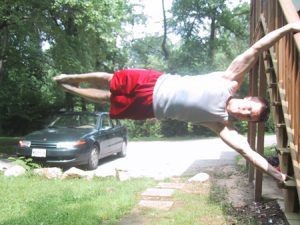
Ironheads are certainly not neglected in core training either: The overhead press can be very easily converted into a core training method with the overhead farmer’s walk:
To perform this exercise, first do the overhead press as detailed in this article. Then, keep the back straight and avoid further bending, look straight ahead, and begin walking. Your core muscles will tense tremendously in order to keep the weight stable and the back straight.
Two of the other “core four” lifts will inherently train the core, those being the squat and the deadlift. More detailed explanations of these lifts will come in the future, but for now…
The squat is performed by resting the bar on the flexed trapezius muscles. Keeping the feet shoulder width apart, and the feet pointing naturally (ie: what feels good and natural to the individual), squat down, making sure that your back is “locked”—ie: not bent over— your knees are not turned in, and your hips are at least parallel with the knees. Preferably, you should go “ass to grass”, but make sure you keep your back tight.

The deadlift is done by “standing at attention”:, making sure the bar is touching your shins, lock the tension in your lower back—in other words, keep it hollow—, and look your eyes up to the sky while keeping the head straight (this ensures proper spinal alignment). Maintaining that back tension, bend down with the legs, but keep the torso straight, and grab the bar without looking.
While grabbing onto the bar, lift with the legs until they are straight, then clench the buttocks and then lift with the hips, lifting the back straight. Make sure to “feel” the push through the floor, and keep the abdomen tight.
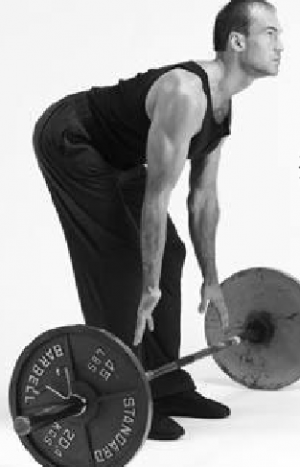
Beyond that, just practicing whatever athletic movement you’re interested in will train the core: throwing punches, swinging a golf club, and so forth.
Conclusion
In reading this, you might have noticed how so many fundamental maneuvers target the core. There are two things you should take away from that: 1) That the core is highly important to basic human function and 2) There’s no need to do any specific isolation exercises for it, as doing those basic lifts and calisthenics will sufficiently hit the core.
If “weak hands make a weak man”—and they do—then “the thrust is a must” can be another fitness aphorism for all physical culturists.
Read More: Why You Should Skip Crunches And Do These Ab Exercises Instead
Just a little note; how would weightlifters need to protect their internal organs from damage?
Putting a large amount of weight on the body strains various parts of the body.
However, like I say in my gym paraphernalia article, your average schlub doesn’t need a weight belt.
I don’t use a weight belt unless I am lifting a weight where my max rep range will be 5 or under and since I am doing massive volume training now I haven’t bothered putting a belt on in a long time. I even took it out of my bag which is a shame because I have a great belt from Inzer which has my last name embroidered on it.
Side note and question: I used to use separate shoes for my squats. I am a big fan of Inov-8 and their gym sneakers. I use their F-Lite 250 v2 (used the v1 before that) for normal gym use and used to use the Fastlift 325 for squatting and deads but since going volume I have left the 325s at home with their big chunky heel and just do everything in the F-Lite since the weight is much reduced for my 20 rep sets.
Any thoughts on this? I know some people like barefoot, but I don’t. Just don’t feel comfortable with it. Do you think those lifting shoes are still important at lighter weights or that the flat and solid F-Lites are fine for what I am doing?
How, or maybe more pointedly, why do you put yourself through such pain at your age. I reckon we’re around the same vintage, and yes, I keep fit enough, but, it’s only the cardio stuff I do now. Weights just seem too extreme for the 40 year old + frame to endure. I’d be afraid of getting a slipped disc or perhaps straining the arteries in my heart or brain at this age. I’ve heard of healthy dudes getting mild heart attacks and strokes from doing weights at this point in their lives.
I’m not in pain at all. In fact I feel terrific
I’ve always used a different pair of shoes specifically for leg day. Brands and styles always change, but I like to have a very “solid” foot placement, especially for heavy squats / leg press / hacks. Something that provides full support and doesn’t allow your foot to move around inside. I also prefer a different sock on leg day; one with a thicker bottom for additional support. This may sound a bit anal, but for me, there’s a tremendous difference. Certain materials/textures in certain socks make for a perfect “grab” to the insole of the shoe, thus creating the perfect overall fit.
Agreed. Both of these have a solid sole which is good for lifting but one of them has a heel specially made for squatting
Before my car accident I went barefoot. As for now, I wear a flat bottom shoe, like an indoor soccer shoe or a wrestling shoe. I think your shoes are fine.
Absolutely correct – you always feel terrific!… A quality of life that the average person has never experienced. It’s the pain we endure in the gym that makes almost everything else in life seem trivial. Weight training (when performed correctly) will provide a lifetime of dividends.
Right. Yeah I feel sore but also euphoric at the gym and strong and confident at all other times. My diet is healthy, I’m well hydrated. Pain isn’t DOMS from the gym. Pain is never knowing what being truly strong feels like, pain is being overweight and out of shape. I feel freaking great. If I didn’t I wouldn’t do this
Exactly – living any other way is unacceptable.
So I spend Abiut 3hours a day in the gym. 2 hour lifting before work and an hour cardio after work. I would donit all in one shot but timing just isn’t my friend here.
Anyway, this guy I work with…not fat but way not in shape, says he thinks that that is crazy. Meanwhile, she spends 3 hours at a bar after work 4 days a week and on the weekends god knows how many often not getting home until sun rise.
So I am crazy because I chose to spend that time exercising but he is perfectly normal because he spends as much or more time getting drunk???
So true. I can remember working with many people in the past that were quick to criticize the fact that I packed my own lunches and chose to eat “clean” when they would go out for fast food everyday. Where are they now?… All of them are overweight, taking prescription drugs, 1 had a stroke (at 40) and 1 is dead from a heart attack (at 43). There is no substitute for a healthy lifestyle – nothing on this planet can convince me otherwise!
Agreed. Let them laugh all they want when i eat a lunch at my desk hits my Macros. I have had smokers criticize me for eating too much chicken!
the carbon footprint created by chickens isnt as bad as the carbon monoxide footprint left by a smoker. or is it?
Hilarious
Those barefooters always get a dirty look
Not as bad as the ones with the little footsie shoes. Ugh. I can’t lift barefoot. I never feel correctly balanced.
I would prefer those feet-shoes over barefoot. Barefoot has the chance of polluting my air-space while those feet-shoes, as beautiful as they are, offer comedic material.
I concede this point to you.
If you can get below parallel without shoes on, you don’t need shoes with a heel,
“Schlub”
Nailed that one.
Great article Larsen, and very timely. I literally had a conversation via email with another ROKer today about how I work core daily but not with the goal of the 6 pack — i have a faint outline of one, but just won’t make the trade offs that it requires at my age to get down to 10% or lower body fat…I am happier this way — so not for the 6 pack, but rather for the core strength and its overall usefulness.
I have been doing Standing Oblique crunches, toe to bar, leg raises and cable curls. Anything else you would toss in that mix Larsen?
As always, great article.
Just the ab exercises I’ve already discussed in previous articles.
I like the toes to bar exercise, whats your opinion on that? And please go ahead and do make an article on the human flag!
The toes to bar exercise is basically just the V-Raise I’ve talked about, so I like it.
And I’ll be sure to make an article on the human flag when I am capable of doing it.
I have the outline of a four pack too. Sounds like we’re both at about 12% bodyfat. It’s good enough.
At the gym I heard a trainer once tell a client, “Yeah, I can get you down to eight percent, but you’re gonna hate your life.”
Yeah 12-15 but I haven’t pulled out my caliper in a while. I am not as concerned with it any more. I feel comfortable biking or running in the park with no shirt and that is enough for me.
a few years ago I decided I wanted to drop to 8% (I was turning 40…we do stupid things when we are turning 40). It took about 6 months of super hard work and restrictive dieting. I did hate my life. More than that, I felt light headed a lot and generally unwell. I set a goal and attained it, but have no desire to do it again much less maintain it.
You can have abs at 16%. I have had mine professionally tested. But as lolknee says, bodyfat doesn’t mean a whole lot as long as you are fit and hale.
Usefulness against the skanks when they hit you with punches and knees?
You can “Zumba” their way through though.
Zumba is a very dangerous technique, hard to master….
And hard to fap to? My dear sir , you just said the most astonishing word in the world…..
lol
G’day sir i bid to you https://uploads.disquscdn.com/images/ff4ded6a76ff3c86e09afe5d1951c2cfa9298003a9f1e408116a6af0c15df180.jpg
Most highest praise to the lord of sand niggers
My beard is more like this:
https://uploads.disquscdn.com/images/5b9ee41e807aba6ce1402fea06b3af94e468b23a6e55c110c072e10d0d63843d.jpg
Glasses sold separately.
How did you know that i, a most humble benevolent dickhead commenter is a lover of outrageously stunning, large, excessively hairy and smartly combed beards? Dear sir, you have invoked my curiosity. Pray,tell me more about it.
I am all ears now.
If what you say is true… the Shaolin and the Zumba… could be dangerous!
why would skanks want to do that when I am so nice to them 🙂
The skanks will do that because you’re nice to them.
when I say nice I mean I give them what they need…..
The back side of your hand?
when necessary.
Windmills and TGUs are awesome for the core!
Hear hear on the article! Good to point out that many of the best exercises have ancillary core benefits.
Do you dye or shave your grey ball hair?
I am fortunate in hair color. I haven’t spotted a single gray yet…ball or head.
Is this the trade-off you speak off?
That is a luxury
Yeah, I am sure I will catch one sooner or later, but my hair color is exactly the same light brown in winter dark blonde in summer that it was when I was 12….even if not as thick
So push ups do reasonable core work? Similar to plank?
Yes, they’re good body weight exercises, along with pull ups, lunges, and a few others.
My hardest working core exercise is seated tricep machine. Go figure.
Haha, clearly you’re performing them in a unique way, but I can relate. The best ab workout I’ve ever gotten in my life was the first time I experimented with straight-arm lat pulldowns–those things blew me up. As I worked on my form, I was eventually able to make them into an excellent lat exercise as they’re intended to be.
It sounds like you’re incorporating a bit too much “crunch” in your lift and you might want to lower the weight so that it works the targeted muscles rather than assistance or compensating muscles (unless of course you prefer the ab work, then by all means kill it).
Yeah I’m guilty of stacking the weights a bit much. I never do abs so it’s a good bonus.
If you’re doing high-rep pushups, I can see that. I’ve experienced it myself and I can say that I was basically combining planks, presses, tris, shoulders, neck, upper-back and some sort of weird leg and forearm exercises while performing high-rep, rest-pause pushups with hand variations across incline and decline settings. They ultimately gave me two hernias and irreparably screwed up my wrists, but at the time I was happy with my results.
In your 40s, I reckon lifting weights will just damage my back, if not now, well then 10 years down the line. I just stick with thread-mill (boring), cycling (not quite so boring) and other cardio stuff at my grand old age.
If you don’t start now you probably never will. There are guys in my gym who lift heavy in there 40s and my uncle is in his 50s and lifts heavy. Basically it’s safe but never ever skip the warm up which should consist of dynamic stretching followed by a sport specific stretch eg. For the bench press start work on the rotator cuff followed by doing sets of light bench presses. Then start your heavy lifting. And of course study correct form religiously. It’s a lot to write in a comment but i recommend you start.
What’s the point? I just want to be relatively fit, but, the whole weight thing is way too much, so I stick to the cardio stuff.
Muscle loss. Lifting can slow down Muscle loss. Cardio will never do that.
You can get excellent results from strength training without lifting weights. Strength training will build muscle and burn calories all the time rather than solely when performing the exercise like cardio.
You’re probably more likely to drop dead doing cardio than you are weights. Anecdotally it’s more convenien common to hear of guys having hearts doing cardio than doing squats.
you could just stick to the machines, no free weights
the guy who popularized jogging in the west dropped of a heart attack- while jogging 😉
Sarcopenia bitch.
I thought he was shot.
Machines? Dude haven’t you seen Terminator?
Those machines isolate the movement. Compound = more muscles trained, faster workout. Hopping from machine to machine is for idiots, or just old people who don’t know any better.
Lift! Even if you go very light.
You will be more likely to burn yourself out, get hurt, or quit out of boredom if you do cardio, only. And if you are 40 plus, and of a robust frame, jogging is a great way to blow out your knees, back, and arches.
I am getting over a pretty horrific back injury. Yesterday was my first day back in the gym since October. I am weak and fragile, like a little China cup. Very light weights, very limited exercises. Like starting from nothing. But it makes every physical system feel more alive.
Did you hurt your back at the gym or somewhere else?
The initial injury was from a combo of bad stretching done after jogging, and the unending concussion/impact of the jogging itself. The running softened up the ligaments… then the overstretching squeezed out 2 of my vertebral discs like squishing the jelly out of a donut.
Agreed. I have start and quit cardio-based routines more times than I can recount. Need to mix it up.
Being in your 40’s doesn’t make you ancient. But the older you get it’s imperative that you have strength training as part of your fitness protocol.
There’s enough research to support this helping with staving off bone density loss, muscle weakness and structural imbalance as one gets older.
You don’t need to go overboard with hitting one rep maxes like a younger man though. I’d recommend starting out with bodyweight only workouts and then progressing to free weights (barbells, dumbells, kettlebells).
Bodyweight or calisthenic workouts are relatively safe. Pistol squats, bridges, pull ups, pushups, lunges and pull up bar hangs are your friends.
Get the technique and form right first before loading an appropriate weight when it comes to free weights. You only really need to be familiar with compound movements like the deadlift, squat, overhead press, bench press and rows to be maintaining functional strength.
It’s a trade off of sorts. I find doing regular exercise is a great form of mental self discipline and this is the prime reason for doing it. I like the routine and effort involved 4/5 times a week. It lifts my spirit in many ways and feeds into my overall mental motivation.
Maybe weights deserve a try,but my reluctance is tied into the fear of screwing up my back.
Far be it for me to tell you how to run your life. I’m glad you’re benefiting from your current approach.
Just reinforcing what a number of others have written about the benefits of adding some type of strength training regimen for men getting older. Obviously one shouldn’t go nuts with crazy amounts of load and improper form.
I hike a lot more than I run nowadays. Throw in circuits of pull ups, pushups, squats, handstands, and bridges every now and then for strength.
Doing something beats doing nothing though. Good luck.
The trick for for 40+ to master is you have to condition very slowly, if you do that along with lots of stretching you won’t get an injury
I changed from intense triathlon in late 40s (with podium finishes) to simple weights. So much better control safety simplicity health and less danger. IMO
Smokingjacket, I’m turning 50 this year and have been a cyclist and, lately, a very non-competitive runner. In October I started with “You Are Your Own Gym” (app and book) and then moved over in January to the Convict Conditioning regime. My goal was to at least meet the 49+ requirements for the Marine Corps PFT, and I’ll probably hit upper Class 2 by my 50th. Endurance exercise is great, but you’ll thank yourself later if you do the bodyweight stuff. Dirt cheap, simple (not easy) and you can do it anywhere. No weight needed but you.
Hmm, it does deserve future consideration based on what you say.
that core strength model with the rainbow intersection looks like he might be a little unsure about which bathroom to use.
Interesting article and no doubt thoroughly researched by dissecting real cadavers
I must, I must, I must increase my thrust
Ha. I remember that mantra.
Core strength today ?? You jesting ?? See ??
https://pbs.twimg.com/media/C8mQAouXYAE2KNH.jpg
Frank Sinatra looks much younger with long hair and a beard.
Yupp.. What about Clint ?? He does look gorgeous ?? Johnny with hoops & long hair not bad ??
If you can not hold a hand stand (no wall) for 30 sec, your core is weak, period!
p.s. wtf is that thing on the top picture?
Also worth noting is that most of the bellyaching one hears about “my bad back” can be traced directly to a lack of core development/maintenance.
Can I ask genuinely, I’d say the trend at the moment for a smart man is away from the ‘beefcake’ look for men. Am I totally wrong?
Currently if I go out on the scene I am approached by at least 10 guys over the night and they may as well be interchangeable – tight shirt open low, over the top muscles like arm bands, same haircut, tattoos. Even in the nice places, these men seem to be very trendy right now but I just find them to look almost effeminate in their ripped skinny jeans and fake tan. Gosh.
I just want a man to look like a man. Strength is hot but you don’t have to be massive for that to happen – am I like way off? This kinda article is cool because you can build your strength without the ridiculous Ken doll/Incredible Hulk pressure.
Most women I know like athletic but not bulky bodies. A man should at least look like he can do something with his muscles. Bodybuilders simply can’t move, and movement is the fundamental basis of all strength.
It’s nothing special. But it works and is fast: https://stronglifts.com/5×5/
that is not good deadlift form… you should NOT look up to the sky,as it causes more tightness in the already typically overly tight cervical erectors of the neck(think of dowagers hump).. keep your chin tucked and head pulled back when deadlifting.
Very informative. That guy knows his stuff !